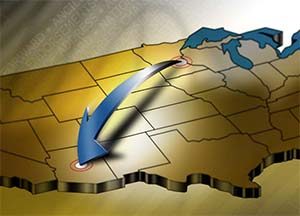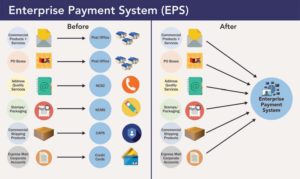Holy Magazines!

And you think you hold on to too many magazines? For over 30 years, James Hyman has been collecting magazines, pamphlets, and newsletters — an enduring dedication to preserving popular culture in print. The collection, now called the Hyman Archive, contains approximately 160,000 magazines, with the oldest piece dating back to 1850.
In 2012, Guinness World Records confirmed the Hyman Archive as the largest private magazine collection. Then it had just 50,953 magazines; 2,312 of them unique titles. Today, the expansive collection lines more than 3,000 feet of shelving in a former cannon foundry in the 18th-century Royal Arsenal complex in southeast London. If you’re ever in the area, you can visit and even borrow an issue or two. The Hyman Archive welcomes donations of magazines, ephemera, and printed materials. tinyurl.com/HymanArchive
Design Information Better

Edward Tufte’s theories are relevant to anyone who needs to write or present information clearly. If you haven’t heard of him, Tufte is a statistician; an artist; a professor emeritus of political science, statistics, and computer science at Yale University; and a presidential appointee under Obama — an all-around brilliant thinker. He’s also the author of four classic, self-published books on data visualization and is considered a guru on the subject. These days, he tours the country giving one-day seminars to packed audiences and avid devotees. His goal is to teach people across all disciplines how to display data for precise, effective, quick reader analysis. He advocates a “keep it simple” approach: Include what your reader needs, don’t include anything your reader doesn’t need, and don’t let decorative bells and whistles get in the way. His books and lectures are loaded with instructive examples. edwardtufte.com
“Good design is clear thinking made visible.”— Edward Tufte
Taming Email Chaos
 Could you use a little help managing your email? Boomerang for Gmail is an extension that gives you more control over when you send and receive email. Its “Send Later” feature enables you to compose a message and schedule it to send once in the future, or at set intervals. This is useful when you’re composing a message at a time when it could get lost in the shuffle, such as over the weekend, and would like to send it at a time when it’s more likely to get noticed. Or, when you want to send the same message periodically. The tool’s namesake feature sends an email back to you if your recipient hasn’t replied or opened your message by a time you set — making it easier to remember to check in when other people haven’t followed up. After an email is sent and is being tracked, you can view a copy of it with status updates, such as how many times the person opened it and clicked on content within the message. You can also postpone incoming emails by making them disappear from your inbox into a folder or label, then bringing them back to the top of your inbox at a specified time. Boomerang requires a browser extension, available for Chrome, Firefox, Safari, and Opera. The tool offers a free version and three paid tiers. boomeranggmail.com
Could you use a little help managing your email? Boomerang for Gmail is an extension that gives you more control over when you send and receive email. Its “Send Later” feature enables you to compose a message and schedule it to send once in the future, or at set intervals. This is useful when you’re composing a message at a time when it could get lost in the shuffle, such as over the weekend, and would like to send it at a time when it’s more likely to get noticed. Or, when you want to send the same message periodically. The tool’s namesake feature sends an email back to you if your recipient hasn’t replied or opened your message by a time you set — making it easier to remember to check in when other people haven’t followed up. After an email is sent and is being tracked, you can view a copy of it with status updates, such as how many times the person opened it and clicked on content within the message. You can also postpone incoming emails by making them disappear from your inbox into a folder or label, then bringing them back to the top of your inbox at a specified time. Boomerang requires a browser extension, available for Chrome, Firefox, Safari, and Opera. The tool offers a free version and three paid tiers. boomeranggmail.com
USPS Changes MOVE UPDATE Rules
 In 2017, the U.S. Postal Service returned or forwarded more than 2 billion pieces of mail. To cut down on this inefficiency, the USPS is implementing a new verification process and fee structure for its Move Update program. These changes could mean higher penalties for publishers mailing with inaccurate data.
In 2017, the U.S. Postal Service returned or forwarded more than 2 billion pieces of mail. To cut down on this inefficiency, the USPS is implementing a new verification process and fee structure for its Move Update program. These changes could mean higher penalties for publishers mailing with inaccurate data.
The USPS requires mailers of commercial First-Class Mail and USPS Marketing Mail to update their address data against the USPS Change of Address (COA) database in order to be eligible for automation and presort rates. Until now, the USPS has monitored this compliance by verifying a sampling of each mailing and imposing a $0.07 per-piece fee for noncompliant addresses over a 30 percent threshold. With a new process that checks mailers’ Intelligent Mail barcode (IMb) data against census-based address information, the USPS now will verify each entire mail list, drop the error threshold to 0.5 percent, and increase the penalty charge to $0.08 per noncompliant piece above the threshold.
Your COA errors, both above and below the threshold, will be viewable on your Mailer Scorecard in the Business Customer Gateway (BCG). Armed with this data, work with your mail service provider to improve your list hygiene, limit penalty fees, protect your postal discounts, and ensure readers receive your magazine. tinyurl.com/MoveUpdate2018
Streamline Your Postal Payments
 The U.S. Postal Service is upgrading its payment system for business customers. The new Enterprise Payment System (EPS) enables mailers to manage and pay for various USPS products and services in one place, with one method of payment. This will be a welcome relief for publishers who currently have to track multiple processes — some in person, some online.
The U.S. Postal Service is upgrading its payment system for business customers. The new Enterprise Payment System (EPS) enables mailers to manage and pay for various USPS products and services in one place, with one method of payment. This will be a welcome relief for publishers who currently have to track multiple processes — some in person, some online.
Not quite all services are included in the program. Using EPS, mailers can manage and fund commercial, domestic, and international products and services, which include First-Class Mail, USPS Marketing Mail, Periodicals, PO Boxes, Caller Services and Reserve Services (EPOBOL), and Address Quality Products (ACS, AEC, AECII). This includes streamlined permit management.
The USPS is in the early stages of rolling out the program. In fact, participation is still being granted by individual request. If you are ready to get rolling, send an email titled “EPS Request” to USPSPayment@usps.gov. Include your name, address, contact information, and Customer Registration ID (CRID).
To use EPS, mailers need to be registered Business Customer Gateway (BCG) users. Upon approval, you will log into BCG, open an Enterprise Payment Account (EPA), and fund it either as an Automated Clearing House (ACH) Debit, which allows automatic withdrawal from your bank account, or as a Trust Account, which allows you to prefund your account using a variety of payment methods. The USPS will require all users of the Centralized Account Processing System (CAPS) to switch to EPS before it retires the CAPS system in 2019. tinyurl.com/USPSeps

